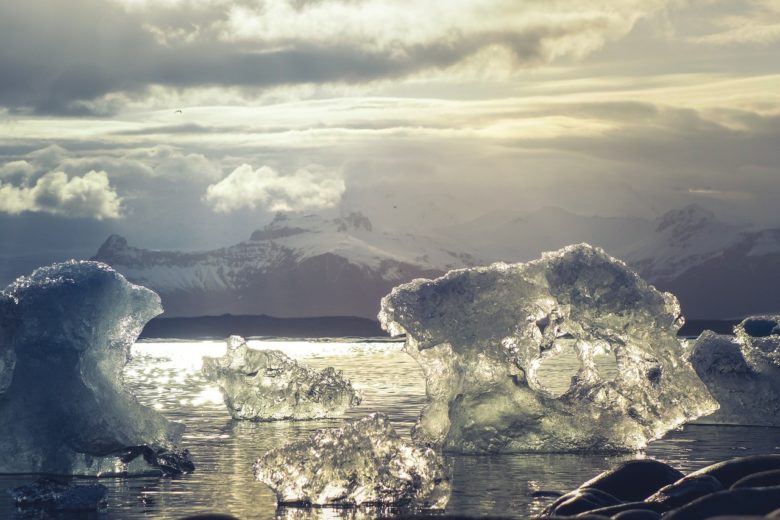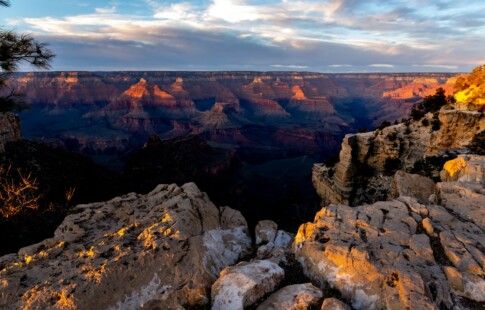
After a Heated Month, What’s The Outlook for Arctic Sea Life?
We are reader-supported. When you buy through links on our site, we may earn affiliate commission.
Up north, the ice is melting. This fact is nothing new for many of us, who have heard the warnings of global climate change since the early 2000s. However, as new reports continue to emerge, one thing is becoming increasingly clear: Sea ice is melting, and faster than anyone thought. If this trend continues, we’ll be headed for a complete seasonal melt of the ice caps by 2030 — far ahead of the direst predictions of yesteryear.
Rising oceanic temperatures and melting ice can have a tremendous impact on various factors, both locally and around the globe. It’s important to take a close look at how the rest of the ecosystem — both at home and around the world’s oceans — will fare under these new conditions.
Global Climate Change
Though the linear quality of climate-change science makes it easy to see what direction the world is going in the long term, several unpredictable factors influence the speed at which the process moves. It is impossible to project the exponential rate by which ice sheets melt. While warmer global temperatures will naturally result in ice melting at a faster rate, other factors complicate the pace of this melting.
For instance, the more ice sheets break up, the faster they will melt, as there is more surface area exposed. Likewise, the influx of cold fresh water into the surrounding environment from the melting ice can have enormous and unpredictable effects on tides. While tides and currents might typically operate like clockwork, the system is dependent upon very predictable global temperatures. With warming oceanic temperatures and ice melt introduced locally, some tides have been thrown off balance.
Melting Arctic Ice
The Atlantic Meridional Overturning Circulation (AMOC), for instance, accounts for a tremendous amount of the world’s water circulation. With changing oceanic factors from the melting ice, AMOC is showing signs of sluggishness. Without the circulation of water around the world, the entire oceanic balance could be thrown into flux.
Of course, if this is the case, the repercussions of melting ice stretch far beyond the northern and southern reaches of the planet. A lack of water circulation can mean continued colder temperatures for some areas, with uncharacteristic blizzards and other weather anomalies. Rising ocean temperatures can also account for a larger instance of hurricanes off tropical coasts, as more moisture takes to the air, making conditions ideal for a cyclone.
All of this has been on display in recent years. Several Caribbean islands and the eastern U.S. experienced several extremely severe hurricanes this past year, whereas climate change has contributed to the wildfires scorching the western states. Scientists postulate this trend will continue.
The Wildlife
With all these factors — and more — potentially getting hit by climate change, ocean wildlife everywhere is in danger. While people tend to rally around campaigns targeting charismatic megafauna — “Save the bears” — some of the worst damage is targeted on the ocean’s platform of microorganisms and plant life. These, in turn, provide the working ecosystems that support the world’s giants.
Coral, for instance, has shown to be a deceptively fragile organism. With rising temperatures has come the phenomenon of coral bleaching, in which the coral turns completely white. This is becoming increasingly commonplace throughout the world’s oceans. Warming water temperatures contribute to the preconditions for coral bleaching, along with changes in light and available nutrients.
Coral and algae exist in harmony with one another, the algae acting as a booster to the coral’s natural immunities. While the algae reside within the coral, coral populations are better able to repel natural bacteria, parasites and sickness. The bleaching comes when coral becomes stressed by external conditions and expels the algae. Following the expulsion, the coral becomes significantly more vulnerable to the natural ailments the algae ordinarily fended off. Bleaching events can result in a single sickness wiping out entire reefs.
Coral, incidentally, remains one of the most important platforms for ocean life. Coral reefs provide a unique environment in which many species are accustomed to living. By endangering the health of the reefs, potentially hundreds of other species become endangered by proxy. They also shield the shorelines from intense weather events. With the death of gigantic tracts of coral reef, the effects of hurricanes and tidal waves will be even worse than usual for humans and wildlife living along the shores.
Natural Disasters and Coral Reefs
Global warming is not the only environmental threat to the world’s coral reefs. Naturally destructive events also include hurricanes and erratic tide patterns. Both of these factors have some correspondence with global warming, with many scientists positing rising ocean temperatures will likely mean greater instances of extreme weather — hurricanes included.
With the advent of global melting, several other species have also had their unique arctic homes destroyed. Chief amongst these is the iconic polar bear, which normally lives on the surface of the ice and hunts sea-born creatures like seals and walrus. With the continued melting of polar sheets, polar bears often find themselves stranded on ever-shrinking territory, unable to move from one sheet to the next and easily avoided by their usual prey. For many bears, the swim between sheets is too long.
The warming has also had a terrible effect on native populations of the northernmost reaches. Communities of Inuits, for instance, have traditionally hunted walrus as a source of fatty meat to survive the long winters. While technology has been introduced to the population, and neither starvation nor freezing is imminent, global warming represents the end of a cultural way for many tribes.
The journey across the ice for traditional walrus hunts is often too dangerous and claims the lives of many hunters. Indeed, the walrus population, which requires steady ice for lounging, has been a cause for concern among many scientists, who see the population unable to survive the changes. This, unfortunately, is a similar outlook for arctic sea life throughout the area. For plants and animals, the changes of global warming are particularly jarring.
The New World
As warming continues, the world will continue changing in strange new ways. Many populations — from the lowliest coral to huge polar bears and walrus — will experience environmental stress the likes of which the world has not seen in millennia. Species that are the most adaptable and tough will survive and thrive. However, those with specified environments will likely go extinct. Although those in arctic conditions will be hit hardest, the ripples of global warming stretch across the Earth.
Share on
Like what you read? Join other Environment.co readers!
Get the latest updates on our planet by subscribing to the Environment.co newsletter!
About the author
Jane Marsh
Starting from an early age, Jane Marsh loved all animals and became a budding environmentalist. Now, Jane works as the Editor-in-Chief of Environment.co where she covers topics related to climate policy, renewable energy, the food industry, and more.





